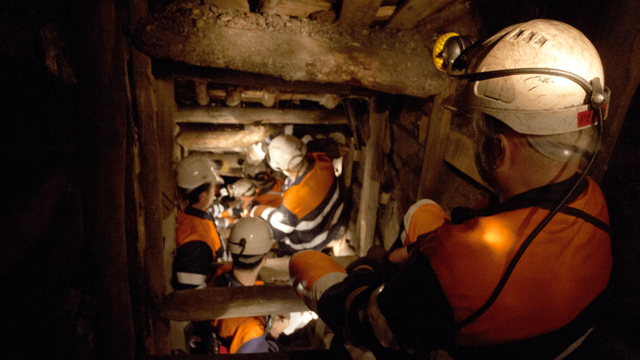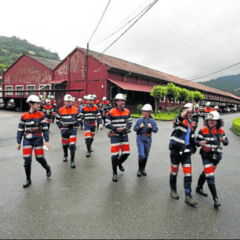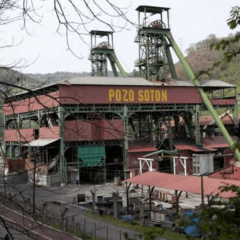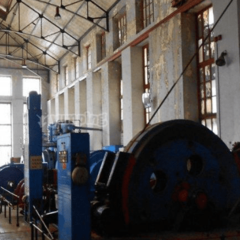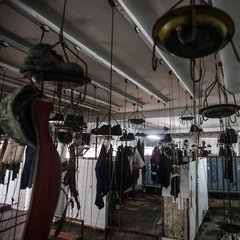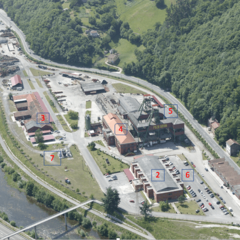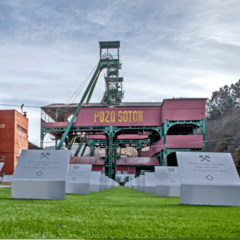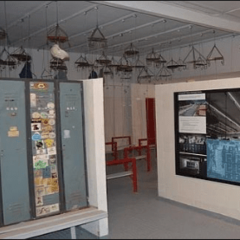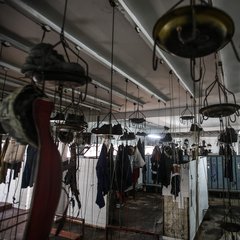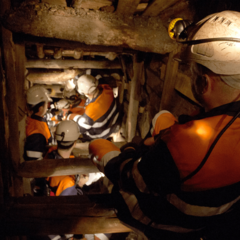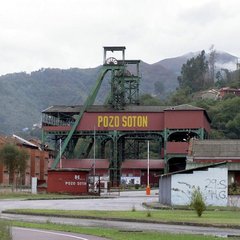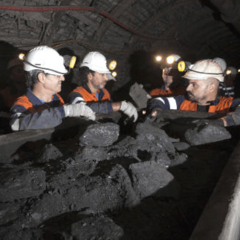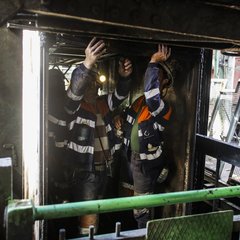Soton Mine
How does it feel to be a miner? In Pozo Sotón, visitors can find the answer in a literally up close manner, since the guided tour through the underground galleries is a sweaty experience and requires a good physical condition. The trip starts with putting on the right dress: change of underwear, overall, helmet and lamp, not to mention the breathing device in case the air gets thin. A shaking and wobbling elevator ride down to level 8 at 386 meters takes visitors to their first big challenge: a sloping shaft with a 100-meter-long narrow staircase, inclining with an average of 43 degrees. The only light comes from the helmet lamps and the air turns fresh or stuffy depending on the ventilation system. The tour explores the galleries for about five kilometers and goes down to level 10 at 556 meters below the surface. On the way, visitors learn about the various water, air, communication, control, power, and ventilations facilities used in the mine. A vertically running coal seam and a wall chaser illustrate how the coal was mined. Back to daylight, those who are still fit may join the guided tour of the surface installations, including the 33-meter-high twin headstocks and the once-modern coal-sorting area.
Soton Mine
Pozo Soton
Linares, AS-17
33950 San Martín del Rey Aurelio
Asturias
Spain
+34 (0) 630 - 119642
Homepage
History
Two headstocks, flanked by a covered coal sorting plant and an engine house with a Siemens winding machine and several compressors are at the center of the colliery Pozo Sotón. They were constructed between 1917 and 1923 in the course of a comprehensive modernization, which involved a considerable deepening of the shafts. However, the historic roots of the mine go back much further. As early as the end of the eighteenth century, the reigning king Charles IV commissioned the army engineer Fernando Torres Casado to survey the Asturian basins in search of coal deposits. In 1792 Casado made a find southeast of Oviedo in the municipality of San Martin del Rey Aurelio. But it was only in 1845 that the Englishman William Partington, founder of the first gas supplier to Madrid, developed the industry. After his company, the Compañía Cantábrica de Santa Ana, went into liquidation in 1867, the colliery witnessed various changes of ownership until it was acquired by Hermanos Herrero in 1877. At that time, part of the mined coal went by rail to the port of Gijón, whereas the main customer was Duro y Compañía, a fast growing enterprise that put its first blast furnace into operation in 1850 in the neighboring municipality of Langreo. In 1900, Duro took over Pozo Sotón, embarking on a comprehensive modernization in 1917 that shapes the appearance of the pit to this day, despite various extensions. Coal production passed into state control in 1967 and continued until 2014 with up to 1,500 employees.
The procedure to declare Pozo Sotón a site of industrial heritage commenced on 1st February, 2013. Today, the site is one of the 100 most important industrial monuments in Spain. Two guided tours make the mine accessible. One of it explores the surface installations, the other one takes four hours and is an impressive as well as challenging underground expedition, which strictly requires physical fitness.
| Duration of a guided tour: | 90 Minutes |
|---|---|
| Admission: | Charge |
| Access for persons with disabilities: | For details see website |
| Infrastructure for children: | |
| Catering: | |
| Gift and book shop on site: | yes |
- Guided tours for children


